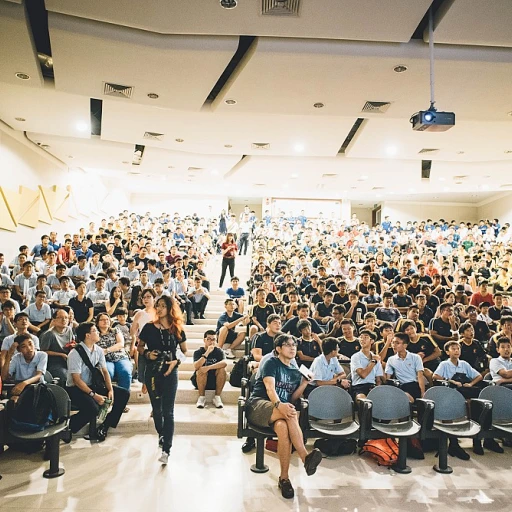Understanding the Traditional Divide
Exploring the Historical Context
The distinction between blue collar and white collar jobs has been a fundamental part of labor markets for decades. Traditional perspectives have often focused on the physical nature of blue collar jobs, typically involving manual labor in sectors like construction and manufacturing. These jobs predominantly require different skill sets, typically offering on-the-job training rather than formal education.
In contrast, white collar jobs have been associated with professional services, where workers operate in office environments, engaging in management, clerical, or technical roles. A higher education background is often a common prerequisite. Historically, these roles were seen as more stable, offering higher pay and benefits.
As we delve deeper into the dynamics of labor, it is important to recognize how these traditional roles have shifted. Notably, employment verification in the future of work reflects new expectations from workers in different sectors.
Technological Advancements and Their Impact
Technological Transformations Reshaping Labor Dynamics
The boundary between blue collar and white collar work is being fundamentally altered by the rapid advancements in technology. This evolution is introducing significant impacts on how jobs are performed, requiring both blue and white collar workers to adapt. As automation and software tools become increasingly integrated into work environments, professionals across various sectors—from construction to office management—find themselves using technology to enhance their roles.
For blue collar workers, innovations in machinery and software offer opportunities to increase productivity and quality of labor. For example, construction jobs increasingly rely on advanced technologies like drones and project management software to enhance efficiency and reduce manual labor. These developments necessitate new skill sets, blurring the rigid distinctions traditionally seen between these types of workers.
White collar roles are also experiencing significant changes. Software capabilities, such as artificial intelligence and machine learning, are transforming traditional office tasks, prompting workers to develop skills in these areas to remain competitive. While some may argue that technology poses a threat to existing jobs, it simultaneously creates new opportunities and the potential for roles that did not previously exist.
This technological shift is driving a need for continuous skill development and education, prompting renewed focus on higher education and specialized training programs. It is essential for both blue collar and white collar workers to remain adaptable and proactive in acquiring skills that align with these evolving job requirements.
In conclusion, as we explore the future of notion-based careers, it becomes evident that technological advancements are not only redefining roles but also offering opportunities to bridge the gap between different types of collar work. This transformation necessitates a reassessment of skill development priorities and highlights the importance of lifelong learning in the modern workforce.
The Rise of Hybrid Roles
The Convergence of Blue and White Collar Roles
The landscape of work is shifting significantly as the distinction between blue collar and white collar jobs becomes increasingly blurred. This transformation is particularly evident in the rise of hybrid roles that seamlessly combine elements traditionally associated with both blue and white collar work.
One of the key drivers behind this change is the introduction of advanced technologies across various industries. As software solutions become more integrated into job functions, tasks that once required manual labor are now complemented by technological tools. For example, in the construction industry, workers use sophisticated management software to enhance project efficiency and precision. Such changes demand that blue collar workers acquire new skills typically associated with more office-based, white collar roles.
This convergence also underscores the importance of continuous skill development and education. Higher education plays a pivotal role in equipping workers with the necessary skills to transition into these hybrid positions. As the workplace continues to evolve, roles that require a combination of technical prowess and manual expertise are on the rise.
An interesting aspect of this evolution is the shift in workplace culture and flexibility. As hybrid roles emerge, traditional blue collar environments are beginning to adopt practices more commonly seen in office settings, such as flexible working hours and a greater emphasis on work-life balance. This adaption creates diverse work environments that accommodate a range of preferences and needs, further diminishing the rigid blue-white divide. For more insights on how the design of workspaces is adapting to such trends, you may explore the concept of flex space.
Overall, the rise of hybrid roles signifies not just a change in labor but a broader transformation in how we perceive and carry out work across various sectors. This evolution offers an equitable opportunity for both blue and white collar workers to upskill and find rewarding roles that fulfill diverse organizational needs.
Skill Development and Education
Importance of Acquiring Necessary Expertise
In the constantly shifting landscape of employment, the importance of acquiring and updating skills has never been greater. With the convergence of blue collar and white collar roles, it's clear that the traditional distinctions are blurring. This evolution is demanding workers in both sectors to adopt a diverse set of skills that blend manual labor expertise with technological proficiency.
In today's job market, many blue collar jobs are increasingly incorporating elements that were once exclusive to white collar positions. For instance, workers in construction roles are expected not only to perform physical tasks but also to operate sophisticated software for project management and design. Therefore, blue collar workers now require a working knowledge of certain technologies to remain competitive.
Conversely, white collar roles are also undergoing a transformation. Professional services such as human resources and office management are not exempt from this change. Employees must adapt to incorporate a broader understanding of privacy policy regulations, labor laws, and software tools that streamline office work environments. This change in labor demands a more hybrid approach to skill development.
Higher education systems are adapting to these changes by offering tailored courses designed to fill these emerging gaps. Innovative programs are focusing on equipping students with skills that cross the traditional blue-white collar boundary, providing a well-rounded education that includes technical training alongside traditional coursework. By positioning themselves as dynamic workers, individuals in search of collar jobs can enhance their employability and ensure they are prepared for the roles that require multi-disciplinary expertise.
For both blue collar and white collar workers, continuous professional development is crucial. This may include attending workshops, enrolling in online courses, or pursuing certifications that keep their skills relevant. By embracing the evolution of work environments, collar workers can ensure they are not only meeting current job market demands but are also prepared for future opportunities.
As the distinction between blue and white collar work continues to diminish, the impetus is on workers to be proactive about their development. Employers are looking for professionals who can adapt to the shifts in collar roles, and it's the responsibility of both seekers and providers to ensure that the workforce remains agile and skilled.
Workplace Culture and Flexibility
Adapting to Diverse Work Environments
The dynamics of work environments have seen a significant shift as the line between blue and white collar roles continues to blur. Historically, blue collar jobs were associated with manual labor in sectors like construction and manufacturing, while white collar jobs were found in offices, focusing more on professional services and management. However, the evolving nature of work is challenging these traditional environments.
Open office plans, remote work options, and flexible schedules are becoming standard offerings in many white collar settings. These changes cater to a growing demand for work-life balance and flexibility, not just in office-based roles, but increasingly for blue collar workers too. For instance, some companies are offering flexible shifts in construction and other labor-intensive sectors to better align with workers' personal lives, thus bridging the gap between traditional employment models.
Moreover, as technology integrates more into both blue and white collar work, the privacy policy and security of workers are coming to the forefront. New software tools require adherence to strict data protection protocols, affecting how both white and blue collar workers handle information. This necessitates training in digital literacy for all roles, ensuring that privacy and data confidentiality are upheld across the board.
Embracing a culture that values diverse work environments can enhance employee satisfaction and productivity. Organizations that successfully integrate flexibility and inclusivity into their workplace culture may find it easier to fill roles, retain talent, and foster collaboration between blue and white collar workers. As the industry progresses, continuous adaptation and openness to change will be crucial in managing the evolving dynamics of collar work roles.
Economic and Social Implications
The Broader Economic and Social Landscape
The evolving dynamics of blue and white collar work are not just confined to individual roles and responsibilities, but also extend into the wider economic and social spheres. One of the pivotal shifts is the increased interdependence of collar jobs, where a change in one sector has profound implications on another. For instance, advancements in construction technology may reduce the manual labor needs for certain blue collar roles but simultaneously create more managerial and software-driven responsibilities that resemble white collar duties.
Furthermore, as more hybrid roles emerge, filling job vacancies becomes a multi-faceted challenge. Employers are seeking individuals who not only possess traditional skills associated with blue or white collar jobs but also exhibit adaptability to bridge any skill gaps. This shift requires comprehensive reforms in education systems worldwide to incorporate a blend of skills that cater to these emerging demands.
Economic repercussions are inevitable, as traditional models of compensation and employee benefits undergo scrutiny and transformation. Companies are evaluating their pay structures to reflect the evolving skill sets that are now in demand, making the distinction between blue collar and white collar paying scales increasingly blurred. This can affect perceptions around job satisfaction and worker motivation.
On a social level, workplace cultures are adjusting. The integration of varied tasks and working environments fosters flexibility and blurs the erstwhile clear-cut line between office and field jobs. This transformation not only influences the daily lives of collar workers but also necessitates a deliberate focus on their mental well-being and work-life balance.
The shift in collar work dynamics also resonates with privacy policies and human resources management. There's now a heightened awareness regarding data privacy, further intensifying the need for precise management practices that ensure accountability while respecting individual privacy. Despite these challenges, the evolving nature of collar work offers tangible opportunities for workers and organizations willing to adapt to these changes.
In this evolving matrix, understanding the differences between blue and white collar dynamics is paramount, not as a point of division but as an interwoven fabric of labor changes and roles that collectively propel the economy forward.













